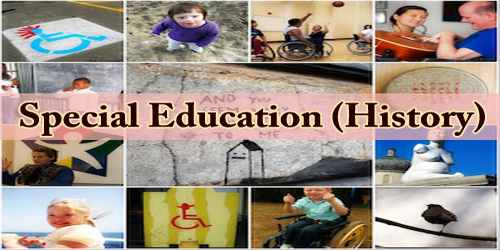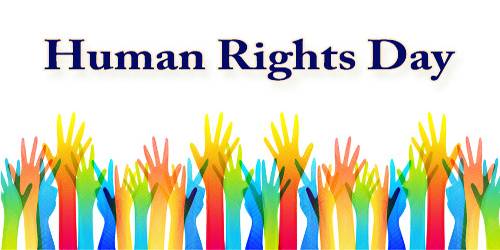Special Education, also called special needs education, is a form of instruction that’s designed to meet the needs of students with disabilities so that they can learn the same skills and information as other children in school. The term special education is used interchangeably with special needs, and the disabilities may be physical, emotional, or behavioral. Ideally, this process involves the individually planned and systematically monitored arrangement of teaching procedures, adapted equipment and materials, and accessible settings. These interventions are designed to help individuals with special needs achieve a higher level of personal self-sufficiency and success in school and in their community which may not be available if the student were only given access to typical classroom education.
Special education serves children with emotional, behavioral, or cognitive impairments or with intellectual, hearing, vision, speech, or learning disabilities; gifted children with advanced academic abilities; and children with orthopedic or neurological impairments. See also deafness; blindness; speech disorder; mental disorder; gifted child; childhood disease and disorder; learning disabilities. Students with these kinds of disabilities are likely to benefit from additional educational services such as different approaches to teaching, the use of technology, a specifically adapted teaching area, or a resource room.
Intellectual giftedness is a difference in learning and can also benefit from specialized teaching techniques or different educational programs, but the term “special education” is generally used to specifically indicate instruction of students with disabilities. Gifted education is handled separately.
Whereas special education is designed specifically for students with learning disabilities, remedial education can be designed for any students, with or without special needs; the defining trait is simply that they have reached a point of unpreparedness, regardless of why. For example, even people of high intelligence can be under-prepared if their education was disrupted, for example, by internal displacement during civil disorder or a war.
The general philosophy of special education is that all people have the ability to learn, regardless of their particular disabilities. The trend in public education has shifted from isolating special education students in separate classrooms to mainstreaming them in the regular classroom for at least part of the day. This is in keeping with the U.S. Department of Education’s Office of Special Education and Rehabilitative Services (OSERS) mission to “…achieve full integration and participation in society of people with disabilities by ensuring equal opportunity and access to, and excellence in, education, employment, and community living.”
In most developed countries, educators modify teaching methods and environments so that the maximum numbers of students are served in general education environments. Therefore, special education in developed countries is often regarded as a service rather than a place. Integration can reduce social stigmas and improve academic achievement for many students.
The opposite of special education is general education. General education is the standard curriculum presented without special teaching methods or supports. Students receiving special education services can sometimes enroll in a General education setting to learn along with students without disabilities.
Historical Background –
The history of Special Education begins with the 18th century. Before that time, persons with disabilities were not taken in consideration and were often mistaken as being possessed by evil powers, cursed, or simply stupid. With the beginning of the 18th century, and also of the period known as the Enlightenment, ideas about education started to arise.
The Enlightenment period influenced Special Education is many ways. To start, Jean Jacques Rousseau (1712-1778) publishes his Emile, a book about the education of children. According to Rousseau, learning should happen in agreement with a child’s cognitive speed, with minimal outer stimuli from society, which is known for praising social roles, and wealth. This idea of teaching children in their own pace sets the ground for many educators (Johnston).
Charles Michel L’Epeé was one of the pioneers in the 18th century in what concerns the education of the disabled. In 1760 he founded the first public school for people with disabilities in France. He was concerned with language and phonetics being taught in a different way as a tool for the education of deaf and blind students. Following L’Epeé’s path, Valentin Haüy founded the “Institution Nationale des Jeunes Aveugles” in 1784, which is recognized as the first school in the world for the education of blind people. Haüy was inspired by many people: Rousseau, L’Epeé, and Madame Von Paradis, who was blind, and helped him develop the methods used in the school. Using these methods, Haüy was able to educate a blind boy who later became a teacher in the same school. Another person who was also concerned with the education of people with special needs, Jean Marc Gaspard Itard was concerned with different methods in order to educate disabled children. He tried to educate a boy, who was found in the wild, for about five years. With no actual improvements, Itard gave up on the attempt and let the boy go back to his wildlife. Still, his researches and efforts were of great influence on the works of special educators, especially in the United States.
In Germany, Samuel Heinicke experimented with training deaf children to speak, and in the 19th century Friedrich Moritz Hill (1805–74), a leading educator of the deaf developed this method in relation to the concept that education must relate to the “here and now” of the child known as the “natural method.” Thus arose the oral method of instruction that in time became accepted practice throughout the world.
No serious attempt was made to educate or to train persons with visual impairments, however, until the late 18th century. Valentin Haüy, known as the “father and apostle of the blind,” opened the National Institution of Blind Youth (Institution Nationale des Jeunes Aveugles) in Paris in 1784, with 12 blind children as his first pupils. News of Haüy’s success in teaching these children to read soon spread to other countries. Subsequently, schools for the blind were opened in Liverpool, England (1791), London (1799), Vienna (1804), Berlin (1806), Amsterdam and Stockholm (1808), Zürich, Switzerland (1809), Boston (1829), and New York City (1831).
Scientific attempts to educate children with intellectual disabilities originated in the efforts of Jean-Marc-Gaspard Itard, a French physician and otologist. In his classic book The Wild Boy of Aveyron (1807), he related his five-year effort to train and educate a boy who had been found running wild in the woods of Aveyron. Itard’s work with the boy became notable for the possibilities it raised regarding the education of persons with mental or emotional disabilities. Years later his student Edouard Séguin, who emigrated from France to the United States in 1848, devised an educational method that used physical and sensory activities to develop the mental processes. Séguin’s published works influenced Maria Montessori, an Italian pediatrician who became an educator and the innovator of a unique method of training young mentally retarded and culturally deprived children in Rome in the 1890s and early 1900s. Her approach emphasized self-education through specially designed “didactic materials” for sensorimotor training; development of the senses was the keynote of the system.
The 20th century is characterized by the implementation of laws to assure that people with disabilities would have their rights to education guaranteed. In 1906, the New York University included in the courses offered by the school a training program for special education teachers. In 1908 the French researcher Alfred Binet, along with Theodore Simon, created the intelligence scale: a standardized intelligence test in order to identify mentally retarded children. Later on, the test would be applied to the American standards, and the idea of Intelligence Quotient was introduced in 1916 by Lewis Terman, renaming the test from the Simon-Binet scale to the Stanford-Binet scale. Continuing the wave of implementations, in 1918 all states recognized that all citizens have the right to education, and in 1922 the Council for Exceptional Children (CEC) was founded by Elizabeth Farrell. This Council plays an important role in providing laws to protect those with disabilities. In 1931 the United States Office of Education established a section on the exceptional children, and in 1936 blind persons are included in the Social Security Act of 1935. Despite some efforts, the attention from special educational issues was shifted to other concerns such as the Great Depression and the Second World War.
However, in the 1950s the number of changes made in the governmental area was significant. To start, in 1950 the National Association for Retarded Children (NARC) was founded by parents of children with mental disabilities. This association ignited the idea of public law 94-142, by asking that every mentally retarded child has the right to education and that such would occur depending on each person’s needs. In 1954, in the case of Brown vs. Board of Education, it was stated by the supreme court of the United States that all children have the right to education in equal terms. Finally, in 1958, President Eisenhower signed public law 85-926, which provided grants to colleges and universities to make sure that courses would be offered to prepare teachers for special education. After this, a snowball effect ran through the sixties and seventies.
In 1965, the Elementary and Secondary Education Act was passed, and it provided funds for schools in order to have a proper environment for children with disabilities. In 1966 it was the turn of the Education of Handicapped Act, which was passed in order to grant funds to schools to train teachers, but also required a Bureau of Education for the Handicapped in the Office of Education.
Special education for people with disabilities became universal in developed countries by the late 20th century. Concurrent with this development was the identification of two concepts of individual differences: (1) “interindividual differences,” which compares one child with another, and (2) “intraindividual differences,” which compares the child’s abilities in one area with the child’s abilities in other areas. The grouping of children in special classes rests on the concept of interindividual differences, but the instructional procedures for each child are determined by intraindividual differences that is, by a child’s abilities and disabilities.
Deinstitutionalization proceeded in the US beginning in the 1970s following the exposes of the institutions, and it has taken sometime before the Education for All Handicapped Children’s Act of 1974, to the Individuals with Disabilities Education Act (IDEA) and then Individuals with Disabilities Educational Improvement Act (IDEIA) have come into fruition. School integration was supported as early as the 1970s, and teacher preparation programs in higher education have carefully taught and instructed graduates on inclusion at the classroom, individual, school, and district levels for decades resulting in dual certification of “regular teachers”.
With the Amendments to the Individuals with Disabilities Education Act of 1997, school districts in the United States began to slowly integrate students with moderate and severe special needs into regular school systems. This changed the form and function of special education services in many school districts and special schools subsequently saw a steady decrease in enrollment as districts weighed the cost per student. It also posed general funding dilemmas to certain local schools and districts, changed how schools view assessments and formally introduced the concept of inclusion to many educators, students, and parents.
Information Sources:
















